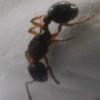I imagine BugFinder probably doesn't have this issue anymore, but for those of you currently with moldy Talus, or other founding chambers they sound like the perfect environment for hungry springtails or isopods to take over for a time. As they would eat the mold spores, the problem of spores being leftover after use of various chemicals is not an issue. And, since many ant species we work with are claustral, they can stick around when the founding queen is introduced into the springtail/isopod cleaned chamber and not be decimated by a hungry ant! True, since it appears that isopods maybe annoying to some ants, springtails would be better in going forward. This allows for a mold free chamber while the queen lays her eggs, and snack for her young when they appear. For semi-claustral queens, they can be replenished when she or her young decide to prey on them as well. It may take a little longer than simply washing, but its neat to see one insect clean up after another!
Edited by JakobS, June 14 2015 - 5:54 PM.




















